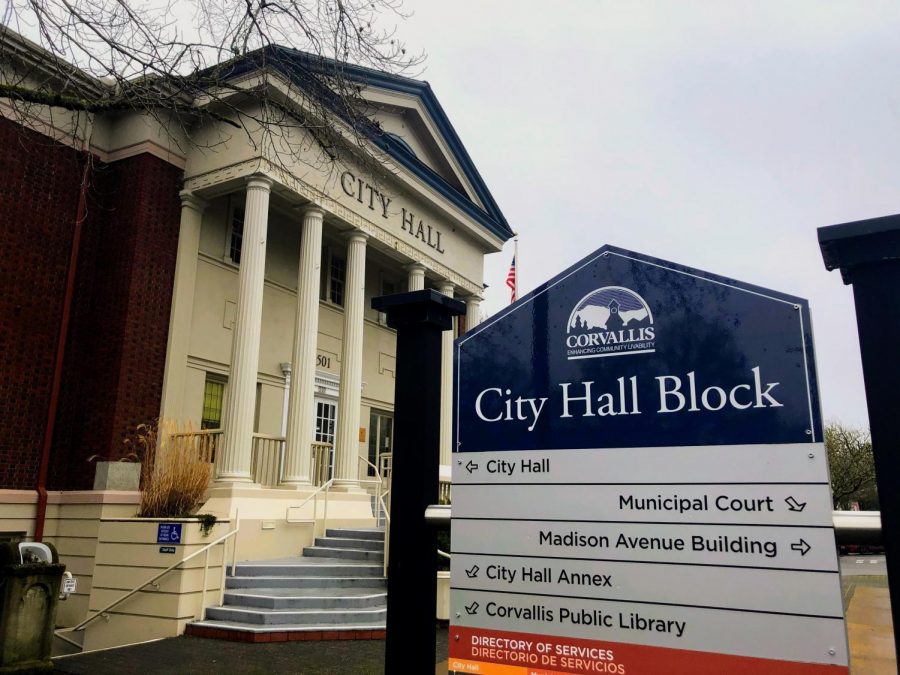Explained: City of Corvallis government
February 3, 2020
Correction: Orange Media Network Photographer Brittnee Barry’s name was initially spelt wrong. The Barometer regrets this error.
The barrier between the students of Oregon State University and the city can seem insurmountable at times, with campus feeling like an entirely different culture than the surrounding neighborhoods in Corvallis.
“When it comes to the way the city runs, we include students as part of the city population,” said Patrick Rollens, the Public Information Officer for the City of Corvallis.
Rollens handles media relations for the city, as well as the city website and social media accounts.
The City Council serves as a legislative branch, while city staff like Rollens under City Manager Mark Shepard take the role of the executive—putting policy into action.
The Corvallis City Council has a total of nine seats, one of which is held by Barbara Bull, the councilor that represents Ward 4, which contains Oregon State University.
The Council is led by Mayor Biff Traber. Corvallis, unlike some cities, uses what Rollens referred to as a “weak mayor system,” where, instead of the mayor running day-to-day operations, these are handled by the City Manager who is hired by the City Council.
Traber largely fulfills a legislative and ceremonial role, with duties focused on chairing council meetings and appointing members of the community to advisory boards, which cover issues from bicycling to social justice initiatives, according to Rollens.
“[Oregon State University] students should get involved in the advisory board process,” Rollens said. “[It would be] really cool to get more student representation on those boards.” This sentiment was echoed by Bull.
“I think it would be great,” Bull said. “Advisory boards are a great way of learning how the city works.”
Bull has been on the city council for five years. However, she has concerns about student turnout in her ward, which has the lowest turnout of all of them, which makes considering the student-city relationship even more important.
Jonathan Strittholt is an OSU student who sits on the city planning commission and is the only undergraduate on the commission.
“The commission is responsible for various tasks such as conducting public hearings on development proposals and reviewing the city comprehensive plan,” Strittholt said.
The meetings of the city planning commission are open to the public, and take place at 6:30 p.m. on alternate Wednesdays at the Downtown Fire Station.
Both students and the rest of the community use public works such as water treatment and sewage, which Rollens described as a “classic example of one of those services nobody thinks about until it goes wrong.”
Another service the city provides is the Corvallis Police Department, which, while they currently do not regularly patrol OSU itself, does cover the surrounding neighborhoods.
After a controversial arrest of an OSU student earlier this year, the state-run Oregon State Police are planning on withdrawing from campus at the end of this academic year. There have been talks to see if the Corvallis Police Department will be able to have jurisdiction over campus, however, Bull fears that covering the OSU campus in addition to the rest of the city could be a “significant strain” on the CPD.
The Fire Department, unlike the CPD, covers the OSU campus and also performs outreach. For example, according to Rollens, the Fire Department does fire safety presentations in fraternity and sorority houses.
Other city services used by both students and community members include the free to ride Corvallis Transit System and Parks and Recreation-managed public spaces.
Rollens stressed that students are valued members of the community, and Corvallis’ services are open to them, and he hopes that students who use them “gain that sense of belonging.”











































































































